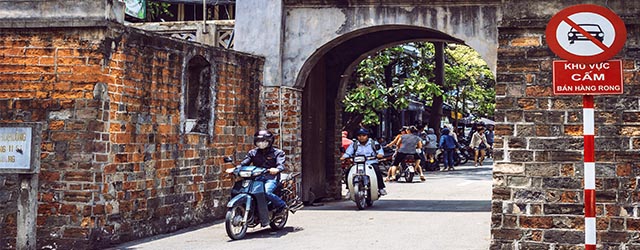Asia’s emerging economies fight to diversify from China and the US.

Back To Special Issue
Stuck between the countervailing forces of China and the US, Asia’s emerging economies are vulnerable to the whims of giants. But as the crisis triggered by the renminbi devaluation in August recedes, investors are trickling back to the region.
The stock market collapse that followed the 2% devaluation of the renminbi reverberated throughout the region and has translated into global investor skittishness regarding most Asian emerging markets equities.
The slowdown in the Chinese economy has dampened export demand in oil-rich Malaysia and coal-abundant Indonesia in particular. Prices have plunged for both crude and coal since last year, biting into export revenues.
Other hurdles loom. Throughout emerging Asia, central banks are bracing for an interest rate hike by the US Federal Reserve. Indonesia, Malaysia and Thailand, where overseas investors hold, respectively, 37%, 30% and 16% of government notes, are particularly exposed, and a Fed rate increase could spur an outflow of global funds.
This medley of difficult conditions associated with the US and China has led to a 17% drop in the Malaysian ringgit’s value to the US dollar year-to-date as of November 9. Indonesia’s rupiah was down about 10% year-to-date in November.
However, the picture has started to brighten recently. Both currencies have regained some ground against the US dollar as jitters after China’s summer market meltdown have subsided a bit. Global funds began trickling back into emerging Asian equities by late October. as fears ebbed.
STOCKS REBOUND
By the end of the first week of November, Asian emerging markets equities had rebounded about 10% since the China-related sell-off in August. Investors poured $1.2 billion into emerging markets equity funds in the final week of October alone, according to data compiled by Jefferies, an investment bank.
The process was accelerated by a surprise rebound in the Shanghai stock market of about 20% in early November.
Experts still urge caution. UBS’s head of emerging markets’ cross-asset strategy, Bhanu Baweja, thinks the rally will be short-lived, and currencies including the rupiah and the ringgit will weaken once more against the US dollar. He says investors are merely unwinding bearish positions, which isn’t the same as outright enthusiasm for emerging-market stocks.
The fundamentals of Asian emerging markets economies are still under stress, as deteriorating corporate balance sheets are less receptive to the benefits of the central bank interest-rate cuts throughout the region in 2015.
With oil prices still weak, the good news is that [Vietnam’s] domestic demand remains well supported.
~ Izumi Devalier, HSBC
GOOD MORNING VIETNAM
Exceptions, according to London-based Capital Economics, may be the Philippines, Vietnam and Bangladesh, nations that continue to establish themselves as manufacturing hubs.
Vietnam is a particularly interesting case. The monthly manufacturing Purchasing Managers’ Index (PMI) complied by HSBC rebounded into positive territory at 50.1 in October, after a September contraction. Export markets remain sluggish, but Vietnam’s strength is a growing domestic market. “With oil prices still weak, the good news is that domestic demand remains well supported,” says Izumi Devalier, a Hong Kong-based economist covering Southeast Asia for HSBC.
Vietnam does have a strong trade relationship with China, where it sources many of the components for its booming manufacturing sector, so the nation will continue to be buffeted by doubts as to whether China’s markets have stabilized.
But in a broader sense, Vietnam has more to gain from association with the eagle rather than the dragon. Andrew Fennell, an associate director at Fitch in Hong Kong, says, “Vietnam’s medium-term growth prospects will be significantly enhanced, should the Trans-Pacific Partnership (TPP) be successfully ratified by participating countries.”

An all-clear for the TPP would mean that Vietnam will enjoy lower tariff barriers and greater access to large consumer markets. The US, Japan, Canada, Australia and other Pacific Rim countries (12 in all) reached an agreement in early October allowing TPP to go forward pending ratification by national governments. Vietnam could arguably be the biggest benefactor. According to Fitch, 39% of its total exports and 23% of imports in 2015 will be accounted for by TPP signatories. (Vietnam is also negotiating an agreement in principle on a separate trade deal with the European Union, which accounts for 18% of Vietnam’s exports.)
Le Phuoc Vu, chairman of Hoa Sen Group, Vietnam’s second-biggest steelmaker, sees the accord boosting its exports to TPP nations, including Mexico, Chile and Peru. He said the company currently faces import tariffs as high as 25%, 6% and 5% respectively in those three nations.
“Hoa Sen Group expects to export at least 120,000 tonnes of steel a year to the Americas within a year of any agreement on the TPP, compared with less than 12,000 tonnes a year now,” he says.
TPP, and Vietnam’s enthusiasm for it, was partly behind Chinese president Xi Jinping’s visit to Vietnamese Communist Party general secretary Nguyen Phu Trong in early November, seeking to ease tensions over territorial disputes in the South China Sea and improve diplomatic relations.
Vietnam’s medium-term growth prospects will be significantly enhanced, should the Trans-Pacific Partnership be successfully ratified by participating countries.
~ Andrew Fennell, Fitch
TPP BOOST
The TPP also gained a vote of confidence from Indonesia’s president Joko Widodo, who met with US president Barack Obama in October and announced that Indonesia would join the group, adding even more muscle to the agreement.
As emerging economies in Southeast Asia seek to diversify away from economic reliance on China, another possible buffer has recently emerged in Thailand, where the military government is actively courting cross-border trade with neighboring frontier economies Myanmar, Cambodia, Laos and Vietnam.
General Prayuth Chan-ocha, who heads Thailand’s ruling military junta, has launched a program to set up 10 special economic zones along Thailand’s borders, offering tax breaks and other incentives. The idea is to stimulate trade—which is already growing considerably—between a more developed Thailand and its fast-growth neighbors. Thailand is predicting 2015 GDP growth of 2.8%, one of the lowest in Southeast Asia.
Myanmar’s economy, although much smaller, is projected to grow at more than 8%, faster than China’s.
General Prayuth’s audacious plan is aimed at filling the gap opened by declining exports to China and Europe. He has said that Thailand will spend up to $83 billion over seven years on new railways, roads and customs posts to facilitate the cross-border trade.
The ultimate aim is to make this emerging portion of Asean a more self-sufficient economic entity, as well as the land conduit for trade between China and India.
Like 20-somethings making real money for the first time, Southeast Asian economies are looking for as many ways as possible to develop and defend their economic independence.



